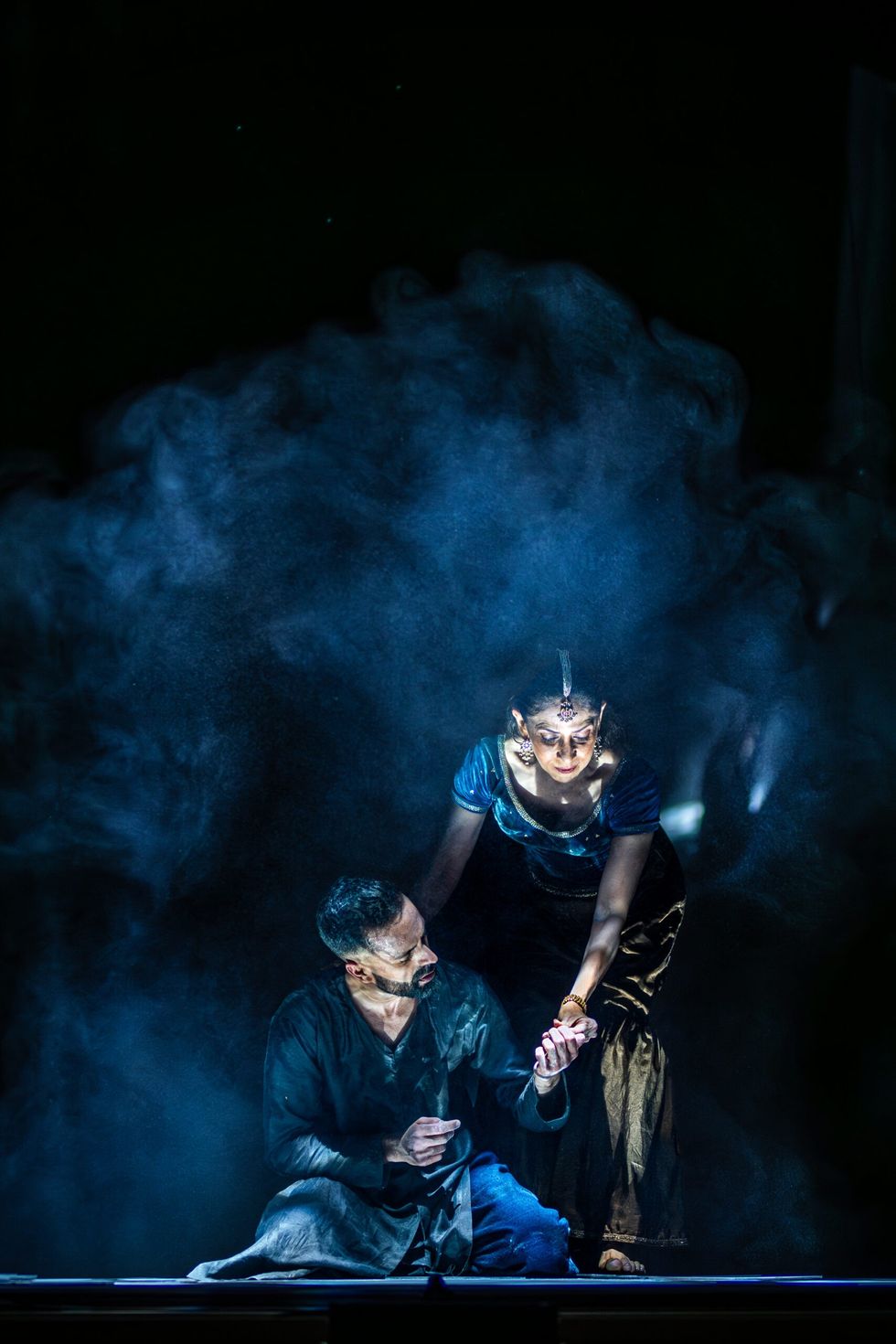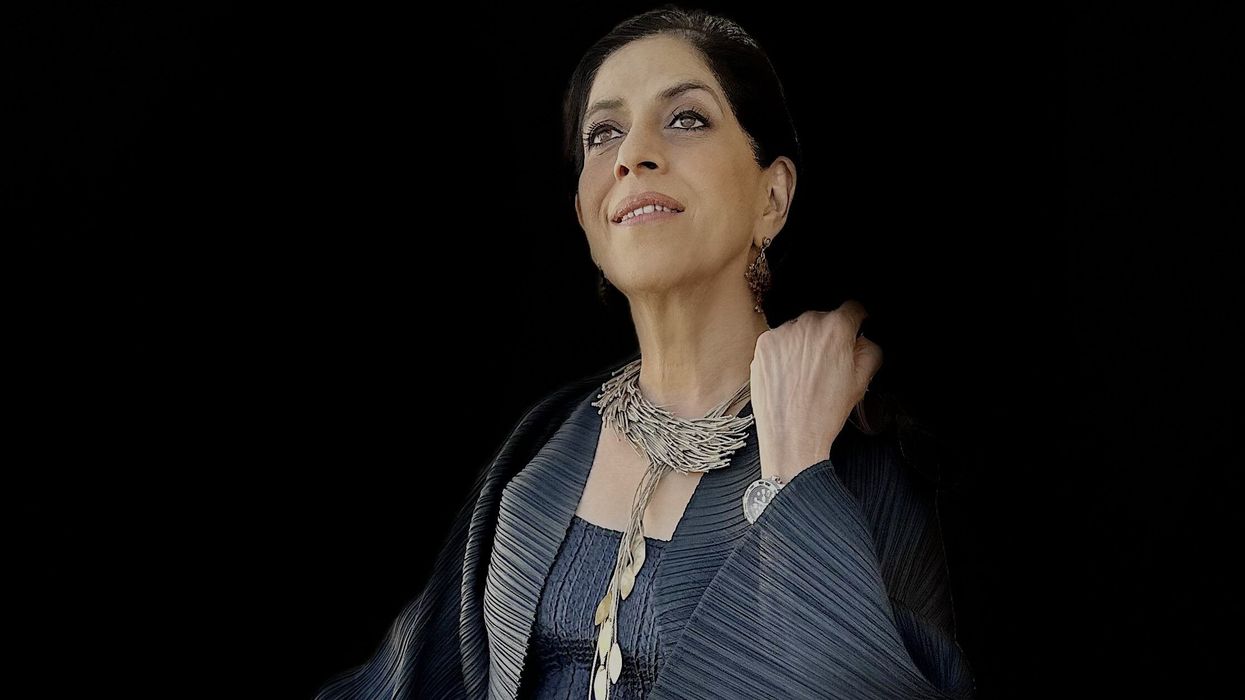WHEN Aditi Mangaldas headlines a show, it is certain to be dynamically, artistically and creatively different from anything that has come before.
She continues that path-breaking journey with the new production Mehek, which embarks on a hotly anticipated UK tour in April.
The Indian Kathak legend has teamed up with the globally acclaimed British dance maestro Aakash Odedra for a production that revolves around a mature older woman falling in love with a younger man. The mesmerising duet about romance and the enduring power of memory is driven by eye-catching choreography, captivating music and what will likely be one of the best dance performances this year.
Mehek adds to the world-class shows that Mangaldas and Odedra have delivered in their respective careers. It follows on from her solo show Forbidden, which was one of last year’s best dance productions that delighted UK audiences.
Eastern Eye caught up with the dance icon to discuss the taboo-busting new show, Mehek.
What inspired your new show Mehek?
The exploration for Mehek started over two and a half years ago through a sense of loss, desolation, dreams, imagination, courage and togetherness.
Both Aakash and I connected over the phone and strangely, when we both shared our thoughts about what we should dance, it was a love story between an elder woman and a young man. Each of us had our own reasons, inspirations and life trajectory that we fed into this work.
For me, it was also to explore and confront a taboo subject in society and hold up a mirror to society in doing so.

Tell us about the show.
It is a love story between an elder woman, myself, and a younger man, Aakash. Why is it that in society we do not see this love story flowering often? Why is it that the other way is acceptable but not this? Why is it that as women grow older, society insists on marginalising and compartmentalising them?
Especially, not giving them equal space as romantic and passionate entities. Their desires and aspirations are not acknowledged and often put on the back burner. Mehek is about confronting these prejudices without preaching, with a narrative that is poetic, beautiful, heartwarming and thought provoking.
What has it been like teaming up with Aakash Odedra?
This is my first ever full-length duet production. I may have danced small pieces with other dancers, but never a fulllength duet in my 55-year career.
Aakash is an incredible artist - full of vigour, energy, diversity, enthusiasm and humility. But most important, he is a wonderful human being.
Even before we teamed up for Mehek, he was always there celebrating my ups in life and being there when the going was rough. It has been a great experience and I do hope both of us grow as artists and learn from this creative process.
What aspects of his dance style do you find most captivating?
I have always said his dance is like the leap of a gazelle with the heart of the Buddha. Unlike me, who has only trained in Kathak, Aakash has had training in multiple genres.
He has explored this understanding in the most immersive and artistic way, making his dance dynamic, versatile and an absolute delight to watch. His dance evokes emotions, going beyond mere technique, which enriches the experience of the viewer.
What’s your favourite Mehek moment?
For me, every moment in a performance matters, more so if it is a truly lived moment. So, to choose one particular part is very difficult.
Some parts have huge peaks of vibrant dance, some have a silent and intense emotional landscape. There are points where the oscillating set design draws you in and others where the lights take you on a journey of the universe.
At times the music resonates so strongly within you that you start reminiscing about your own love story.
Who do you hope will connect with the themes and story of Mehek?
I hope that it reaches across a cross section of society to people of all genders, and cultures who possess varied out looks and experiences of life.
As the Sufi poet Rumi says, “Only from the heart can you touch the sky”.
Love is what brings us closest to humanity. I hope that this poetic love story touches and transforms every heart in the audience.
Is there a key message you want to convey with Mehek?
This piece is essentially about the celebration of love.
And that love needs to be unconditional, unfettered and many hued.
Since Mehek is a love story between an older woman and a younger man, hopefully we break taboos and open many splendoured explorations of romantic love, without sermonising but gently drawing the viewer into a love that fills the ocean and sky.
How do you feel emotionally before the premiere of a new production?
A new production is like giving birth to a child. In the case of Mehek the incubation period was two and a half years.
Everything you do during this time – the research and development phase, the technical residency phase, the creative explorations with collaborators - is fed into the womb bearing Mehek. So, before a premiere, it is like giving birth.
What excites you about bringing Mehek to UK audiences after Forbidden?
I am so excited to be back in the UK again after just a few months. Mehek is very different from Forbidden, which asked the question, “why is the world scared of female sexual fantasy?”. It was ferocious and innocent simultaneously.

How does Mehek compare to that?
Mehek is gentle, poetic and heart-warming. It is like a flower that slowly opens to spread its fragrance – its beauty, its colours across the earth and sky.
I am so enthused that the presenters and audiences in the UK have embraced me as an artist and are welcoming me again to the most prestigious venues.
Why should we all watch Mehek?
I am hoping we are able to take the audience on a journey through an ocean and sky of love. It is also about acceptance of what is, without judgement. As Rumi said, “If you can’t smell the fragrance, don’t come into the garden of Love.”
Mehek at Peepul Centre, Leicester (April 4-7), Birmingham Hippodrome (April 9), Sadler’s Wells, London (April 12-13), The Lowry, Salford (April 16), Northern Stage, Newcastle Newcastle (19). www.aditimangaldasdance.com and www.aakashodedra.com






 Vivek Nityananda
Vivek Nityananda  Taraash Mehrotra as Nikhil
Taraash Mehrotra as Nikhil






